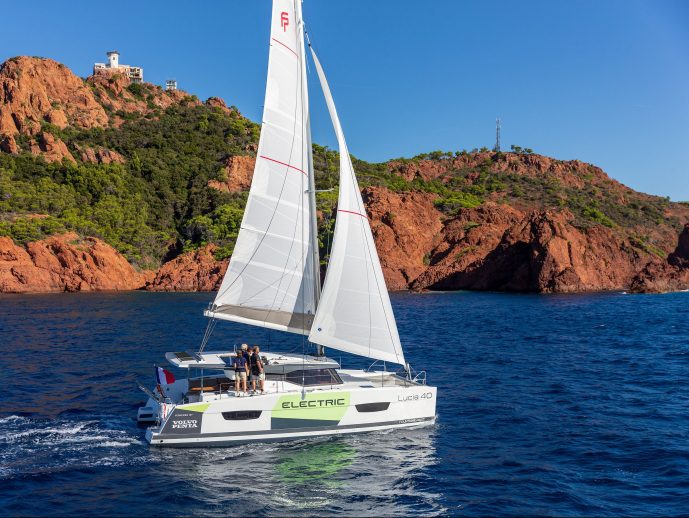Categories more
- Adventures (17)
- Arts / Collectables (15)
- Automotive (37)
- Aviation (11)
- Bath, Body, & Health (77)
- Children (6)
- Cigars / Spirits (32)
- Cuisine (16)
- Design/Architecture (22)
- Electronics (13)
- Entertainment (4)
- Event Planning (5)
- Fashion (46)
- Finance (9)
- Gifts / Misc (6)
- Home Decor (45)
- Jewelry (41)
- Pets (3)
- Philanthropy (1)
- Real Estate (16)
- Services (23)
- Sports / Golf (14)
- Vacation / Travel (60)
- Watches / Pens (15)
- Wines / Vines (24)
- Yachting / Boating (17)
Published
09/24/2019 by Volvo PentaVolvo Penta's new electric Saildrive prototype will be unveiled at Cannes Yachting Festival. Offering near-soundless, low vibration operation, and silent mooring, the initiative is a collaboration with long term boat building partner, Fountaine Pajot. A twin installation of the electric prototype has been fitted to a Lucia 40 catamaran.
Volvo Penta has taken a 'full systems' approach, working with Fountaine-Pajot to understand customer usage patterns of the complete boat. The electric prototype is based on Fountaine-Pajot's extensive customer usage database, which accurately defines drive cycles.
"The input on customer usage is critical to the electric system's design," says Peter Granqvist, Chief Technology Officer at Volvo Penta. "Having identified user profiles, we can more accurately predict aspects of the system which in turn provides increased peace-of-mind to a user or captain."
Proven design delivers more power and torque
This technology is based on Volvo Group's proven designs for electromobility. Li-ion battery packs power an electric motor, which drives the Saildrive propeller. The system offers more power and torque at low speeds compared to a similar diesel engine.
The onboard amenities can be powered from the system's battery packs – in silence for up to 12 hours – ensuring an enhanced experience in nature and a good night's sleep.
Depending on speed and sea conditions, the technology has the potential for up to four hours/20 nautical miles of zero-emission electric cruising, perfect for when operating in sensitive or restricted areas. A more typical scenario would be to use the electric Saildrive for maneuvering around harbors, and for powering 'hotel' loads.
Advanced electronic user interface
As part of the full systems approach, Volvo Penta's Electronic Vessel Control 2 (EVC2) system has been adapted for a Saildrive application. This features Volvo Penta's latest controls and a new driver interface that manages navigation and battery monitoring.
"Introducing a monitoring and navigation display integrated with information from the electric driveline would offer sailboat owners improved functionality, simpler operation as well as easy and safe maneuvering in harbors or marinas," continues Granqvist.
Seeking industry feedback at an early stage
"We are demonstrating the system on the water, in Cannes, to encourage feedback from users and boat builders alike," explains Björn Ingemanson, President of Volvo Penta. "This is the latest example of Volvo Penta gathering market feedback at early stages of a new technology's development, in order to refine product characteristics."
"This partnership highlights the value of electromobility to our customer base," said Romain Motteau, Deputy CEO, Fountaine Pajot Group. "We expect our customers to be excited about what they see in Cannes and the potential it will one day bring to their sailing experience."















